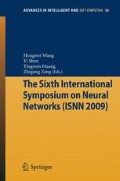Abstract
It is absolutely necessary to machine the complex mould cavity with micro-ball end mill in high speed machining. Because of the priceless and frangibility of the tool, it is significant to predict the cutting force in order to lessen the tool’s disrepair, to ensure the quality and to improve efficiency. This paper established the cutting force prediction model based on BP neural network when machining arc surface of hardened steel in high speed. According to the sample set of experimental results used to train and test the neural network, we realize the cutting force prediction and simulation through introducing the elastic grads’ decrease method to improve the speed of convergence and precision in the process of cutting. The practice showed that most of the error values are about 5% except some special individual. Obviously, to predict the cutting force is feasible in the process of non-stability and non-linear extremely of cutting through the non-linear neural network.
Access this chapter
Tax calculation will be finalised at checkout
Purchases are for personal use only
Preview
Unable to display preview. Download preview PDF.
References
Ma, W., Lin, Z., Chen, K.: The Cutting Force Model of Rigid Ball End Mill. Mechanical Science And Technology 17, 422–424 (1998) (in Chinese)
Ma, W., Wang, N.: The Study of Cutting Force Model Considering The Elastic Distortion of Ball End Mill. Journal of Nanjing University of Aeronautics & Astronautics 30, 633–640 (1998) (in Chinese)
Ni, Q., Li, C., Ruan, X.: Cutting Forces Simulation of Ball-End Milling Based on Solid Modeling. Journal of Shanghai Jiao Tong University 35, 1003–1007 (2001) (in Chinese)
Dimla, E., Dimla, J.R., Paul, M., Nigel, J.: Automatic Tool State Identification in a Metal Turning Operation Using MLP. Neural Networks and Multivariate Process Parameters 38, 343–352 (1998)
Franci, C., Uros, Z.: Approach to Optimization of Cutting Conditions by Using Artificial Neural Networks. Materials Processing Technology 173, 281–290 (2006)
Durmus, K.: Prediction and Control of Surface Roughness in CNC Lathe Using Artificial Neural Network. Materials Processing Technology 175, 321–329 (2008)
Ruan, X.: Artificial Intelligence’s Way Neural Calculational Science the Simulation of Brain’s Function Based on the Cell. National Defense Industry Publishing Company, Nanjing (2006) (in Chinese)
Author information
Authors and Affiliations
Editor information
Editors and Affiliations
Rights and permissions
Copyright information
© 2009 Springer-Verlag Berlin Heidelberg
About this chapter
Cite this chapter
Chen, Y., Long, W., Ma, F., Zhang, B. (2009). Cutting Force Prediction of High-Speed Milling Hardened Steel Based on BP Neural Networks. In: Wang, H., Shen, Y., Huang, T., Zeng, Z. (eds) The Sixth International Symposium on Neural Networks (ISNN 2009). Advances in Intelligent and Soft Computing, vol 56. Springer, Berlin, Heidelberg. https://doi.org/10.1007/978-3-642-01216-7_60
Download citation
DOI: https://doi.org/10.1007/978-3-642-01216-7_60
Publisher Name: Springer, Berlin, Heidelberg
Print ISBN: 978-3-642-01215-0
Online ISBN: 978-3-642-01216-7
eBook Packages: EngineeringEngineering (R0)

